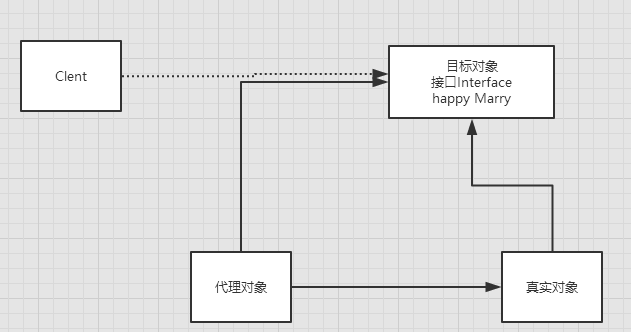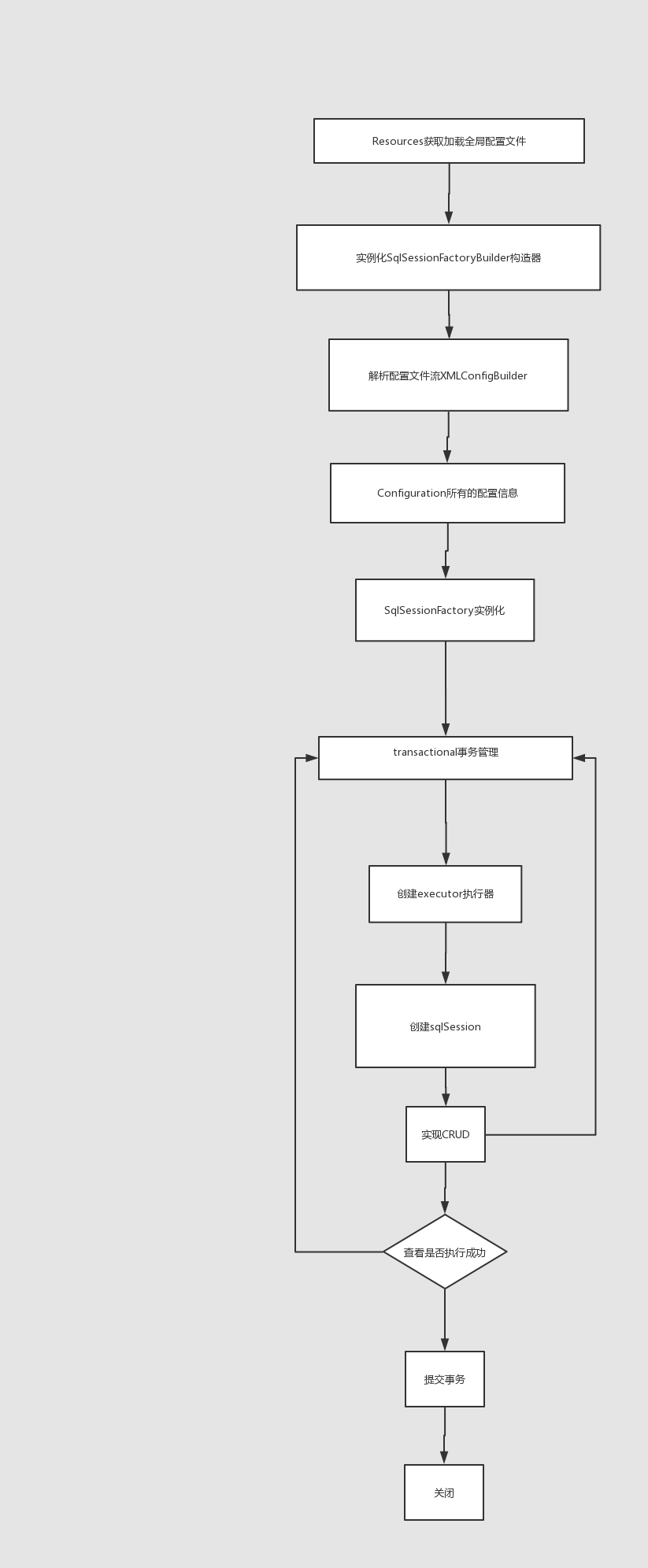Mybatis
Mybatis
- MyBatis 是一款优秀的持久层框架
- 它支持定制化 SQL、存储过程以及高级映射。
- MyBatis 避免了几乎所有的 JDBC 代码和手动设置参数以及获取结果集。
- MyBatis 可以使用简单的 XML 或注解来配置和映射原生类型、接口和 Java 的 POJO(Plain Old Java Objects,普通老式 Java 对象)为数据库中的记录。
持久化
数据持久化
- 持久化就是将程序的数据在持久状态和瞬时状态转化的过程
- 内存:断电即失
- 数据库(Jdbc),io文件持久化。
- 生活:冷藏. 罐头。
持久层
Dao层,Service层,Controller层….
- 完成持久化工作的代码块
- 层界限十分明显。
环境配置
Maven依赖
<dependencies>
<dependency>
<groupId>org.mybatis</groupId>
<artifactId>mybatis</artifactId>
<version>3.5.7</version>
</dependency>
<dependency>
<groupId>junit</groupId>
<artifactId>junit</artifactId>
<version>4.12</version>
</dependency>
<dependency>
<groupId>mysql</groupId>
<artifactId>mysql-connector-java</artifactId>
<version>8.0.26</version>
</dependency>
</dependencies>
Mybatis核心配置文件
<?xml version="1.0" encoding="UTF-8" ?>
<!DOCTYPE configuration
PUBLIC "-//mybatis.org//DTD Config 3.0//EN"
"http://mybatis.org/dtd/mybatis-3-config.dtd">
<configuration>
<environments default="development">
<environment id="development">
<transactionManager type="JDBC"/>
<dataSource type="POOLED">
<property name="driver" value="com.mysql.cj.jdbc.Driver"/>
<property name="url" value="jdbc:mysql://localhost:3306/mybatis"/>
<property name="username" value="root"/>
<property name="password" value="123456"/>
</dataSource>
</environment>
</environments>
<mappers>
<mapper resource="com/test/dao/userMapper.xml"/>
</mappers>
</configuration>
Mapper配置文件
<?xml version="1.0" encoding="UTF-8" ?>
<!DOCTYPE mapper
PUBLIC "-//mybatis.org//DTD Mapper 3.0//EN"
"http://mybatis.org/dtd/mybatis-3-mapper.dtd">
<!--namespace=绑定一个对应的Mapper接口-->
<mapper namespace="com.test.dao.UserMapper">
<!--select查询语句-->
<select id="getUserList" resultType="com.test.pojo.User">
select * from mybatis.user
</select>
</mapper>
编写代码
实体类
package com.test.pojo;
//实体类
public class User {
private int id;
private String name;
private String password;
public User() {
}
public User(int id, String name, String password) {
this.id = id;
this.name = name;
this.password = password;
}
public int getId() {
return id;
}
public void setId(int id) {
this.id = id;
}
public String getName() {
return name;
}
public void setName(String name) {
this.name = name;
}
public String getPassword() {
return password;
}
public void setPassword(String password) {
this.password = password;
}
@Override
public String toString() {
return "User{" +
"id=" + id +
", name='" + name + '\'' +
", password='" + password + '\'' +
'}';
}
}
工具类
package com.test.utils;
import org.apache.ibatis.io.Resources;
import org.apache.ibatis.session.SqlSession;
import org.apache.ibatis.session.SqlSessionFactory;
import org.apache.ibatis.session.SqlSessionFactoryBuilder;
import java.io.IOException;
import java.io.InputStream;
public class MybatisUtils {
private static SqlSessionFactory sqlSessionFactory;
static{
try {
//使用Mybatis第一步:获取sqlSessionFactory对象
String resource = "mybatis-config.xml";
InputStream inputStream = Resources.getResourceAsStream(resource);
sqlSessionFactory= new SqlSessionFactoryBuilder().build(inputStream);
} catch (IOException e) {
e.printStackTrace();
}
}
// SqlSession 完全包含了面向数据库执行 SQL 命令所需的所有方法。
public static SqlSession getSqlSession(){
return sqlSessionFactory.openSession();
}
}
接口
package com.test.dao;
import com.test.pojo.User;
import java.util.List;
public interface UserMapper {
List<User> getUserList();
}
CRUD(增删改查)
namespace
namespace中的包名要和 Dao/mapper 接口的包名一致
select
选择,查询语句;
- id : 就是对应的namespace中的方法名
- resultType:SQL语句执行的返回值
- parameterType : 参数类型
-
编写接口
//根据ID查询用户 User getUserByID(int id); -
编写对应的mapper中的sql语句
<select id="getUserByID" parameterType="int" resultType="com.test.pojo.User"> select * from mybatis.user where id=#{id} </select> -
测试
@Test public void getUserByIDTest(){ SqlSession session= MybatisUtils.getSqlSession(); UserMapper userMapper=session.getMapper(UserMapper.class); User user=userMapper.getUserByID(2); System.out.println(user); session.close(); }
Insert
<insert id="AddUser" parameterType="com.test.pojo.User">
insert into mybatis.user (id,name,password) values (#{id},#{name},#{password})
</insert>
update
<update id="UpdateUser" parameterType="com.test.pojo.User">
update mybatis.user set id=#{id},password=#{password} where name=#{name}
</update>
Delete
<delete id="DeleteUser" parameterType="int">
delete from mybatis.user where id=#{id}
</delete>
注意点:
- 增删改需要提交事务:session.commit();
万能Map
假设,我们的实体类,或者数据库中的表,字段或者参数过多,我们应当考虑使用Map
//万能的Map
int AddUser2(Map<String,Object> map);
<!--对象中的属性,可以直接取出来 传递map的key-->
<insert id="AddUser2" parameterType="map">
insert into mybatis.user (id,name,password) values (#{userid},#{username},#{pwd})
</insert>
@Test
public void AddUserTest2(){
SqlSession session= MybatisUtils.getSqlSession();
UserMapper userMapper=session.getMapper(UserMapper.class);
Map<String,Object> map=new HashMap<String, Object>();
map.put("userid",4);
map.put("username","夏");
map.put("pwd","335945");
userMapper.AddUser2(map);
session.commit();
session.close();
}
Map传递参数,直接在sql中取出key即可! 【parameterType="map"】
对象传递参数,直接在sql中取对象的属性即可!【parameterType="Object"】
只有一个基本类型参数的情况下,可以直接在sql中取到!
多个参数用Map,或者注解!
模糊查询
-
Java代码执行的时候,传递通配符 % %
List<User> userList = mapper.getUserLike("%李%"); -
在sql拼接中使用通配符!
select * from mybatis.user where name like "%"#{value}"%"
配置解析
核心配置文件
-
mybatis-config.xml
-
MyBatis 的配置文件包含了会深深影响 MyBatis 行为的设置和属性信息。
configuration(配置) properties(属性) settings(设置) typeAliases(类型别名) typeHandlers(类型处理器) objectFactory(对象工厂) plugins(插件) environments(环境配置) environment(环境变量) transactionManager(事务管理器) dataSource(数据源) databaseIdProvider(数据库厂商标识) mappers(映射器)
环境配置(environments)
MyBatis 可以配置成适应多种环境
不过要记住:尽管可以配置多个环境,但每个 SqlSessionFactory 实例只能选择一种环境
Mybatis默认的事务管理器就是 JDBC , 连接池 : POOLED
属性(properties)
编写一个配置文件
db.properties
driver=com.mysql.cj.jdbc.Driver
url=jdbc:mysql://localhost:3306/mybatis
username=root
password=123456
在核心配置文件中映入
<!--引入外部配置文件-->
<properties resource="db.properties">
<property name="username" value="root"/>
<property name="pwd" value="11111"/>
</properties>
- 可以直接引入外部文件
- 可以在其中增加一些属性配置
- 如果两个文件有同一个字段,优先使用外部配置文件的
类型别名(typeAliases)
可以给实体类起别名-
<typeAliases>
<typeAlias type="com.test.pojo.User" alias="user"/>
</typeAliases>
也可以指定一个包名,MyBatis 会在包名下面搜索需要的 Java Bean,比如:
扫描实体类的包,它的默认别名就为这个类的 类名,首字母小写!
<typeAliases>
<package name="com.test.pojo"/>
</typeAliases>
在实体类比较少的时候,使用第一种方式。
如果实体类十分多,建议使用第二种。
第一种可以DIY别名,第二种则·不行·,如果非要改,需要在实体上增加注解
@Alias("user")public class User {}
映射器(mappers)
MapperRegistry:注册绑定我们的Mapper文件;
方式一: 【推荐使用】
<!--每一个Mapper.XML都需要在Mybatis核心配置文件中注册!--><mappers> <mapper resource="com/test/dao/UserMapper.xml"/></mappers>
方式二:使用class文件绑定注册
<!--每一个Mapper.XML都需要在Mybatis核心配置文件中注册!--><mappers> <mapper class="com.test.dao.UserMapper"/></mappers>
注意点:
- 接口和他的Mapper配置文件必须同名!
- 接口和他的Mapper配置文件必须在同一个包下!
方式三:使用扫描包进行注入绑定
<!--每一个Mapper.XML都需要在Mybatis核心配置文件中注册!-->
<mappers>
<package name="com.test.dao"/>
</mappers>
注意点:
- 接口和他的Mapper配置文件必须同名!
- 接口和他的Mapper配置文件必须在同一个包下!
ResultMap
结果集映射
id name pwd
id name password
<!--结果集映射-->
<resultMap id="UserMap" type="User">
<!--column数据库中的字段,property实体类中的属性-->
<result column="id" property="id"/>
<result column="name" property="name"/>
<result column="pwd" property="password"/>
</resultMap>
<select id="getUserById" resultMap="UserMap">
select * from mybatis.user where id = #{id}
</select>
resultMap元素是 MyBatis 中最重要最强大的元素- ResultMap 的设计思想是,对于简单的语句根本不需要配置显式的结果映射,而对于复杂一点的语句只需要描述它们的关系就行了。
ResultMap最优秀的地方在于,虽然你已经对它相当了解了,但是根本就不需要显式地用到他们。- 如果世界总是这么简单就好了。
使用注解开发
-
注解在接口上实现
@Select("select * from user") List<User> getUsers(); -
需要再核心配置文件中绑定接口!
<!--绑定接口--> <mappers> <mapper class="com.test.dao.UserMapper"/> </mappers> -
测试
本质:反射机制实现
底层:动态代理

Mybatis详细的执行流程

CRUD注解
我们可以在工具类创建的时候实现自动提交事务!
public static SqlSession getSqlSession(){
return sqlSessionFactory.openSession(true);
}
编写接口,增加注解
public interface UserMapper {
@Select("select * from Mybatis.user")
List<User> getUsers();
// 方法存在多个参数,所有的参数前面必须加上 @Param("id")注解
@Select("select * from user where id = #{id}")
User getUserByID(@Param("id") int id);
@Insert("insert into user(id,name,password) values (#{id},#{name},#{password})")
int addUser(User user);
@Update("update user set name=#{name},password=#{password} where id = #{id}")
int updateUser(User user);
@Delete("delete from user where id = #{uid}")
int deleteUser(@Param("uid") int id);
}
测试类
【注意:我们必须要讲接口注册绑定到我们的核心配置文件中!】
关于@Param() 注解
- 基本类型的参数或者String类型,需要加上
- 引用类型不需要加
- 如果只有一个基本类型的话,可以忽略,但是建议大家都加上!
- 我们在SQL中引用的就是我们这里的 @Param() 中设定的属性名!
动态SQL
什么是动态SQL:动态SQL就是指根据不同的条件生成不同的SQL语句
动态 SQL 元素和 JSTL 或基于类似 XML 的文本处理器相似。在 MyBatis 之前的版本中,有很多元素需要花时间了解。MyBatis 3 大大精简了元素种类,现在只需学习原来一半的元素便可。MyBatis 采用功能强大的基于 OGNL 的表达式来淘汰其它大部分元素。
if
choose (when, otherwise)
trim (where, set)
foreach
IF
<select id="selectBlogByIF" parameterType="map" resultType="blog">
select * from mybatis.blog <!-- where 1=1 -->
<where>
<if test="title != null">
and title = #{title}
</if>
<if test="author != null">
and author = #{author}
</if>
</where>
</select>
choose (when, otherwise)
<select id="selectBlogByChoose" parameterType="map" resultType="blog">
select * from mybatis.blog
<where>
<choose>
<when test="title!=null">
title=#{title};
</when>
<when test="author!=null">
and author=#{author};
</when>
<otherwise>
and views=#{views};
</otherwise>
</choose>
</where>
</select>
trim (where,set)
<update id="updateBlog" parameterType="map">
update mybatis.blog
<set>
<if test="id!=null">
id=#{id},
</if>
<if test="author!=null">
author=#{author},
</if>
</set>
where title=#{title}
</update>
SQL片段
有的时候,我们可能会将一些功能的部分抽取出来,方便复用!
-
使用SQL标签抽取公共的部分
<sql id="if-title-author"> <if test="title != null"> title = #{title} </if> <if test="author != null"> and author = #{author} </if> </sql> -
在需要使用的地方使用Include标签引用即可
<select id="selectBlogByIF" parameterType="map" resultType="blog"> select * from mybatis.blog <where> <include refid="if-title-author"></include> </where> </select>
注意事项:
- 最好基于单表来定义SQL片段!
- 不要存在where标签
foreach
<select id="selectBlogByForeach" parameterType="map" resultType="blog">
select * from mybatis.blog
<where>
<foreach collection="ids" item="id" open="and (" close=")" separator="or">
id=#{id}
</foreach>
</where>
</select>
@Test
public void SelectBlogByForeach(){
SqlSession session=MybatisUtils.getSqlSession();
BlogMapper mapper=session.getMapper(BlogMapper.class);
HashMap map=new HashMap();
ArrayList<Integer> ids=new ArrayList<Integer>();
ids.add(1);
ids.add(2);
ids.add(3);
map.put("ids",ids);
List<Blog> blogs = mapper.selectBlogByForeach(map);
for (Blog blog:blogs){
System.out.println(blog);
}
session.close();
}


 浙公网安备 33010602011771号
浙公网安备 33010602011771号